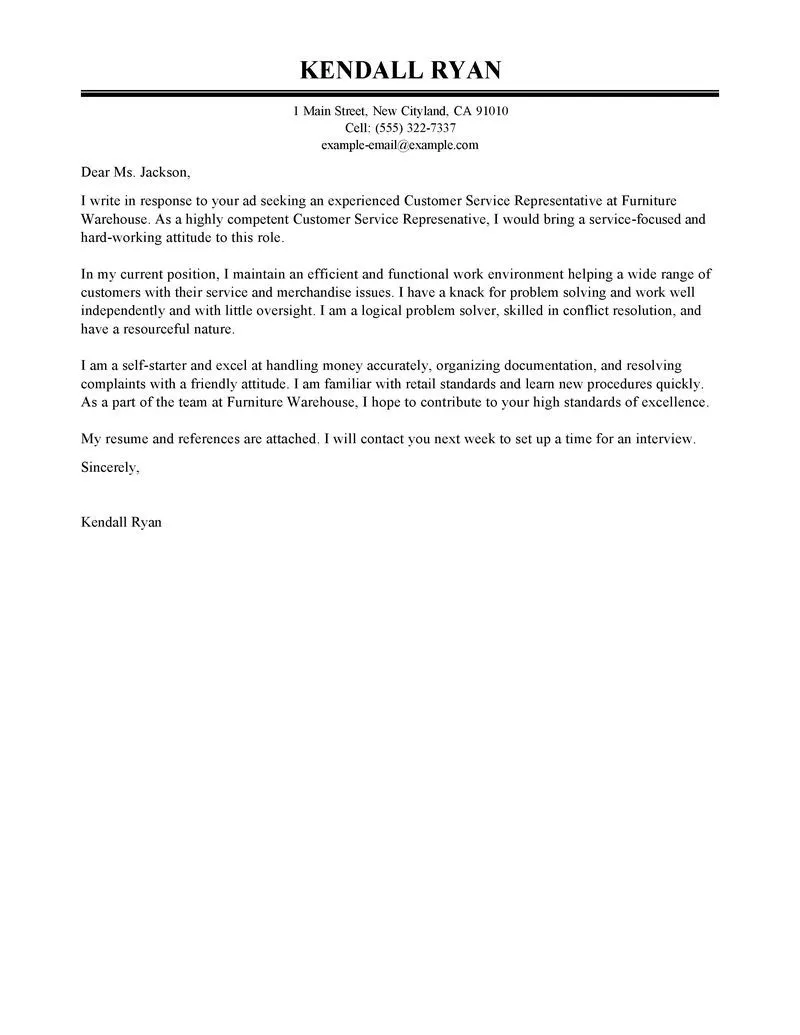What is a Customer Service Cover Letter
A customer service cover letter is a document you submit alongside your resume when applying for customer service positions. It serves as an introduction to the hiring manager, providing a concise overview of your qualifications, skills, and experience, and explaining why you’re a strong candidate for the role. The goal of this cover letter is to showcase your personality, enthusiasm, and ability to provide excellent customer service. It is a chance to make a strong first impression and entice the hiring manager to read your resume and consider you for an interview. This is where you can demonstrate your passion for helping customers and your understanding of the company’s mission and values.
Why a Customer Service Cover Letter is Important
In the competitive job market, a well-written cover letter can make the difference between landing an interview and getting passed over. A customer service cover letter allows you to expand on the information presented in your resume, highlighting specific skills and experiences that align with the job requirements. It provides an opportunity to express your personality and communication style, demonstrating your ability to interact effectively with customers and colleagues. Furthermore, a cover letter shows your genuine interest in the position and the company, which can set you apart from other applicants. By showcasing your enthusiasm and understanding of the company’s values, you can create a positive first impression and increase your chances of getting an interview.
Key Components of a Customer Service Cover Letter
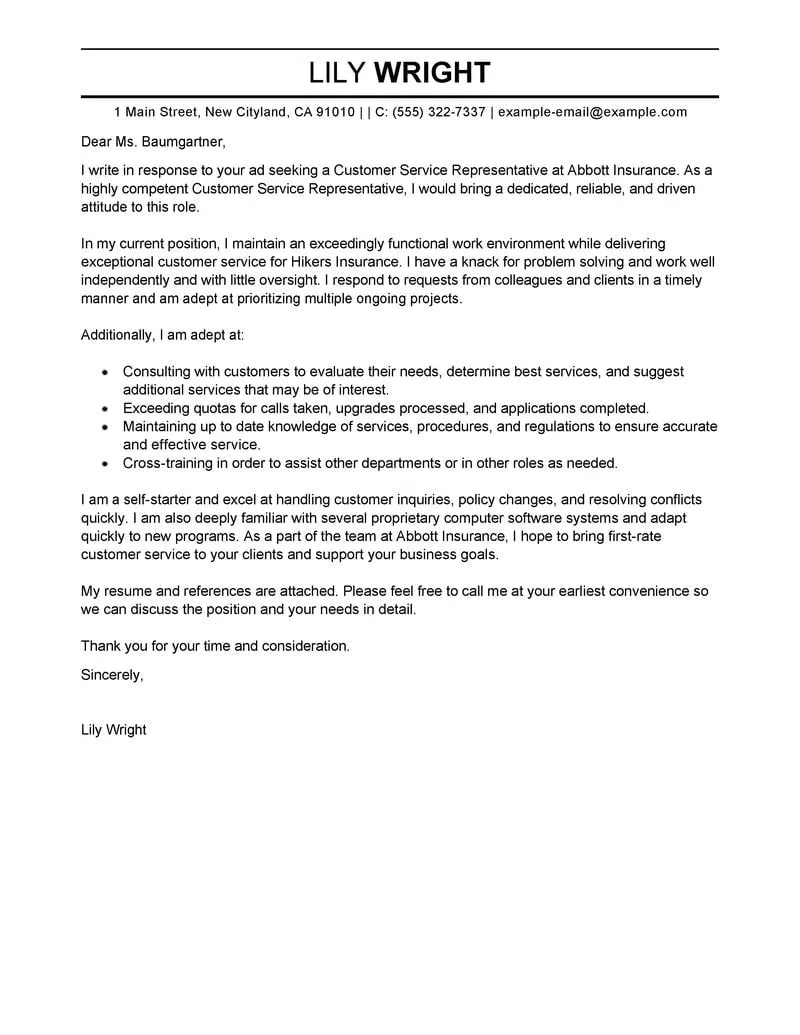
A customer service cover letter typically includes several key components that work together to create a compelling narrative. Your contact information, the date, and the hiring manager’s contact information should be at the top of the letter. The opening paragraph should grab the reader’s attention and state your purpose, while the body paragraphs should highlight your relevant skills, experience, and achievements. The closing paragraph should summarize your interest in the position and encourage the hiring manager to contact you for an interview. Each section should be clear, concise, and tailored to the specific job and company, demonstrating your understanding of the role and your ability to contribute to the team. A well-organized and structured cover letter is essential for creating a positive impression.
Your Contact Information and the Date
At the top of your cover letter, include your contact information, such as your name, phone number, email address, and possibly your LinkedIn profile URL. This information should be clearly displayed so the hiring manager can easily reach you. Below your contact information, include the date the letter was written. This is a standard element of any professional correspondence and helps the reader understand when the letter was created. The date is placed below your contact information, typically left-aligned or centered. This section sets the stage for a professional and organized presentation. It’s important to make sure all your contact information is accurate and up-to-date to ensure the hiring manager can easily connect with you.
The Hiring Manager’s Contact Information
If possible, address your cover letter to the hiring manager by name. Research the company and position to find the name of the person responsible for hiring. Addressing the letter to a specific person shows that you’ve done your homework and are genuinely interested in the role. If you can’t find a specific name, use a professional greeting like “Dear Hiring Manager.” Include the hiring manager’s title, the company name, and the company’s address. This demonstrates attention to detail and professionalism. Tailoring this information makes your cover letter more personal and shows a proactive approach, which can increase your chances of making a positive impression and standing out from other applicants who might use a generic greeting.
A Compelling Opening Paragraph
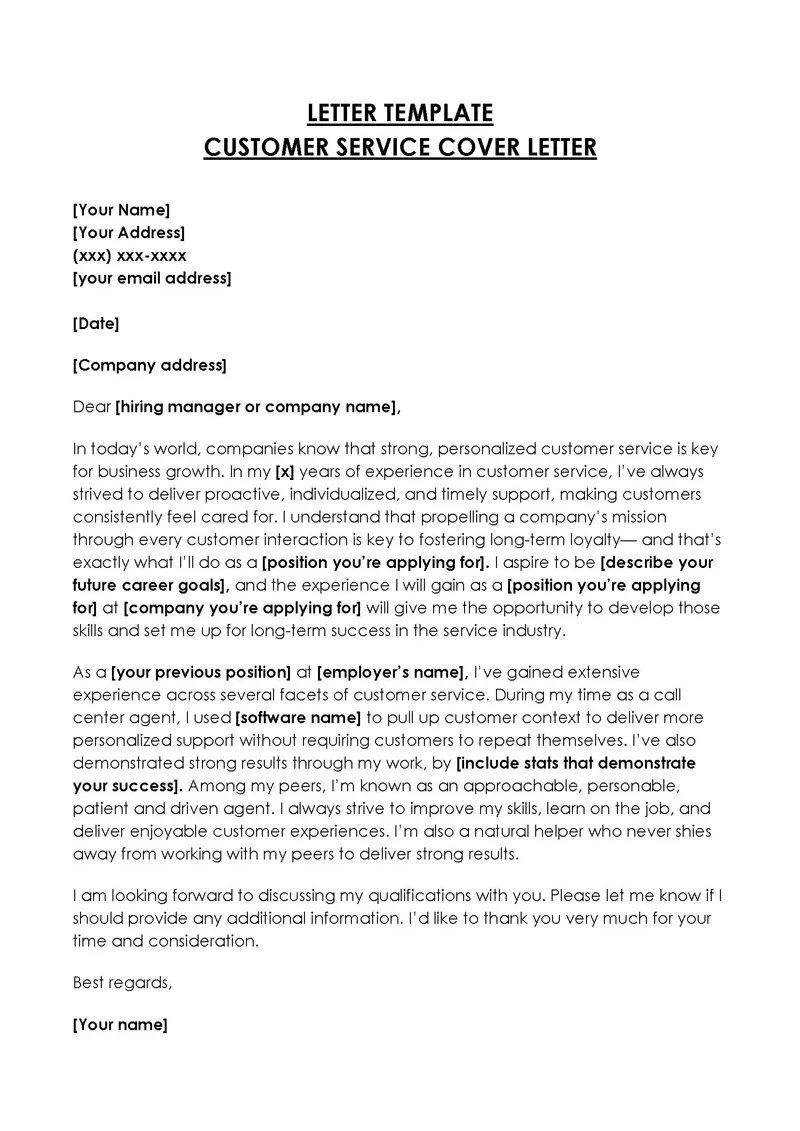
The opening paragraph is your chance to grab the hiring manager’s attention. Start with a strong statement that expresses your enthusiasm for the position and the company. Clearly state the specific customer service role you are applying for. Mention where you found the job posting and why it interests you. Briefly highlight your key skills or experiences that align with the job requirements. This introduction should be concise and engaging, encouraging the hiring manager to read the rest of your letter and learn more about your qualifications. Your opening paragraph should be tailored to the specific job and company, demonstrating your understanding of their needs and your ability to meet them. Making a strong first impression sets the tone for the rest of your application.
Highlighting Relevant Skills and Experience
The body of your cover letter should highlight your skills and experience that are most relevant to the customer service position. Review the job description carefully and identify the key skills and qualifications the employer is seeking. Provide specific examples of how you have demonstrated these skills in previous roles. Use action verbs to describe your accomplishments and responsibilities, and quantify your achievements whenever possible. For example, instead of saying “provided customer support,” you could write “resolved over 50 customer inquiries daily, resulting in a 95% customer satisfaction rate.” Tailor your examples to the specific requirements of the job and company, demonstrating that you understand the needs of the role and are prepared to contribute effectively.
Showcasing Soft Skills
Customer service roles require a variety of soft skills, such as communication, empathy, problem-solving, and patience. In your cover letter, showcase these skills by providing examples of how you have used them in the past. Describe situations where you successfully resolved customer issues, handled difficult customers, or worked collaboratively with a team to achieve a positive outcome. Use specific anecdotes to demonstrate your ability to communicate effectively, listen actively, and provide compassionate support. For instance, describe how you resolved a customer complaint by actively listening to their concerns, empathizing with their situation, and offering a suitable solution. Soft skills are crucial in customer service, so highlighting them effectively can greatly enhance your application.
Quantifying Achievements
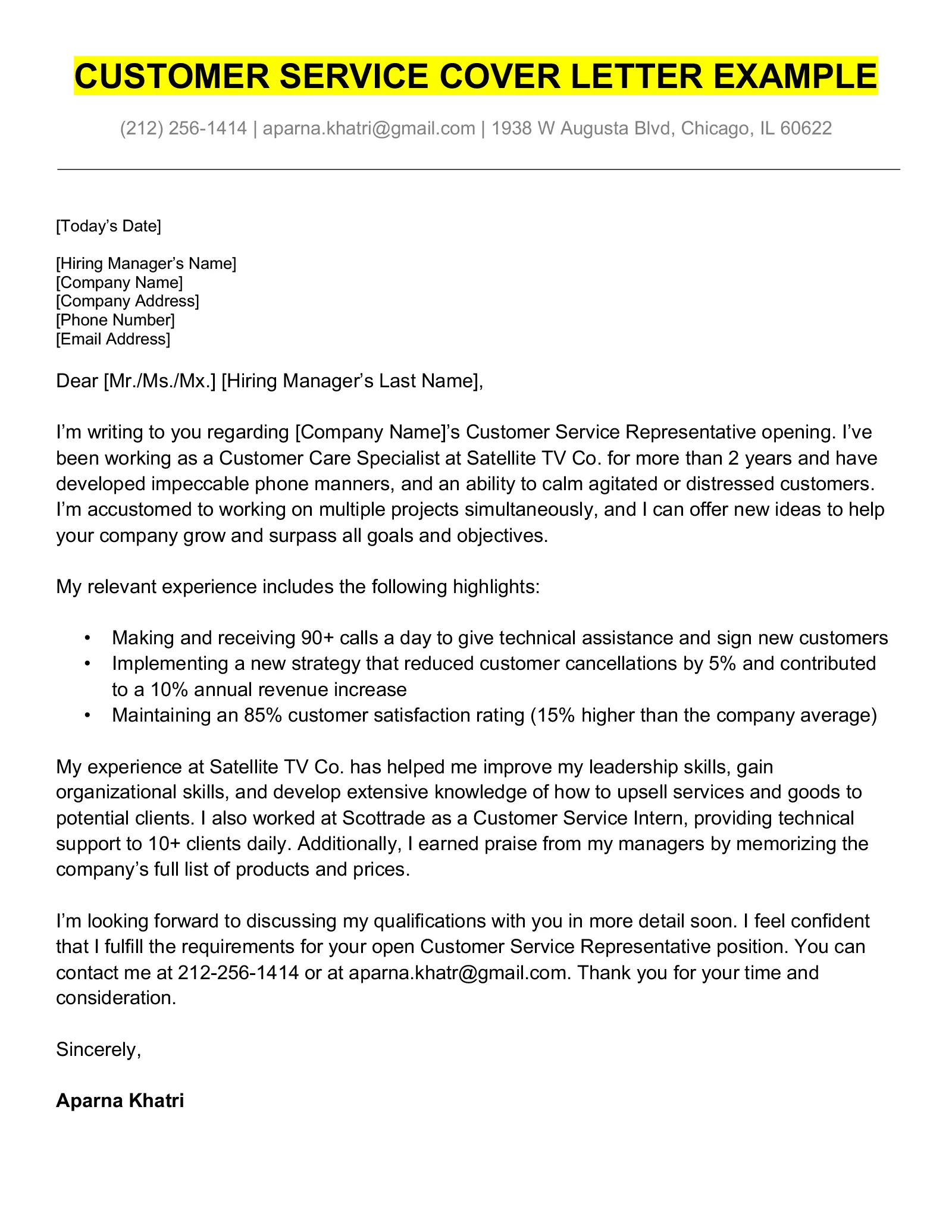
Whenever possible, quantify your achievements to demonstrate your impact in previous customer service roles. Use numbers to illustrate your accomplishments and provide concrete evidence of your skills. For example, instead of saying “improved customer satisfaction,” you could write “increased customer satisfaction by 15% within six months through proactive issue resolution.” Include metrics such as the number of customers you assisted, the speed at which you resolved issues, or the reduction in complaints you achieved. Quantifying your achievements adds credibility to your claims and makes a stronger impression on the hiring manager. This will make your experience more tangible and demonstrates your ability to drive positive results in a customer service environment. The more specific and measurable your achievements are, the more impactful your cover letter will be.
Demonstrating Company Knowledge
Show the hiring manager that you’ve done your research by demonstrating your knowledge of the company. Research the company’s mission, values, and recent achievements. Mention specific products, services, or initiatives that resonate with you. Explain why you are interested in working for that particular company, and how your skills and experiences align with their goals. This will show your genuine interest in the role and demonstrate your understanding of the company’s values. Tailoring your cover letter to the company shows you’re not just sending a generic application but have a genuine interest in being part of their team. You can also mention any relevant experience you have with their products or services, further demonstrating your enthusiasm and suitability for the position.
A Strong Closing Paragraph
Your closing paragraph should reiterate your interest in the position and thank the hiring manager for their time and consideration. Reiterate your key qualifications and why you believe you are a good fit for the role. Express your enthusiasm for the opportunity and state your availability for an interview. Include a call to action, such as “I am eager to discuss my qualifications further and can be reached at [phone number] or [email address].” This makes it easy for the hiring manager to contact you and shows that you are proactive. Proofread your entire cover letter, including the closing paragraph, to make sure it is free of errors and reflects your professionalism. A well-crafted closing leaves a lasting positive impression.
Proofreading and Formatting
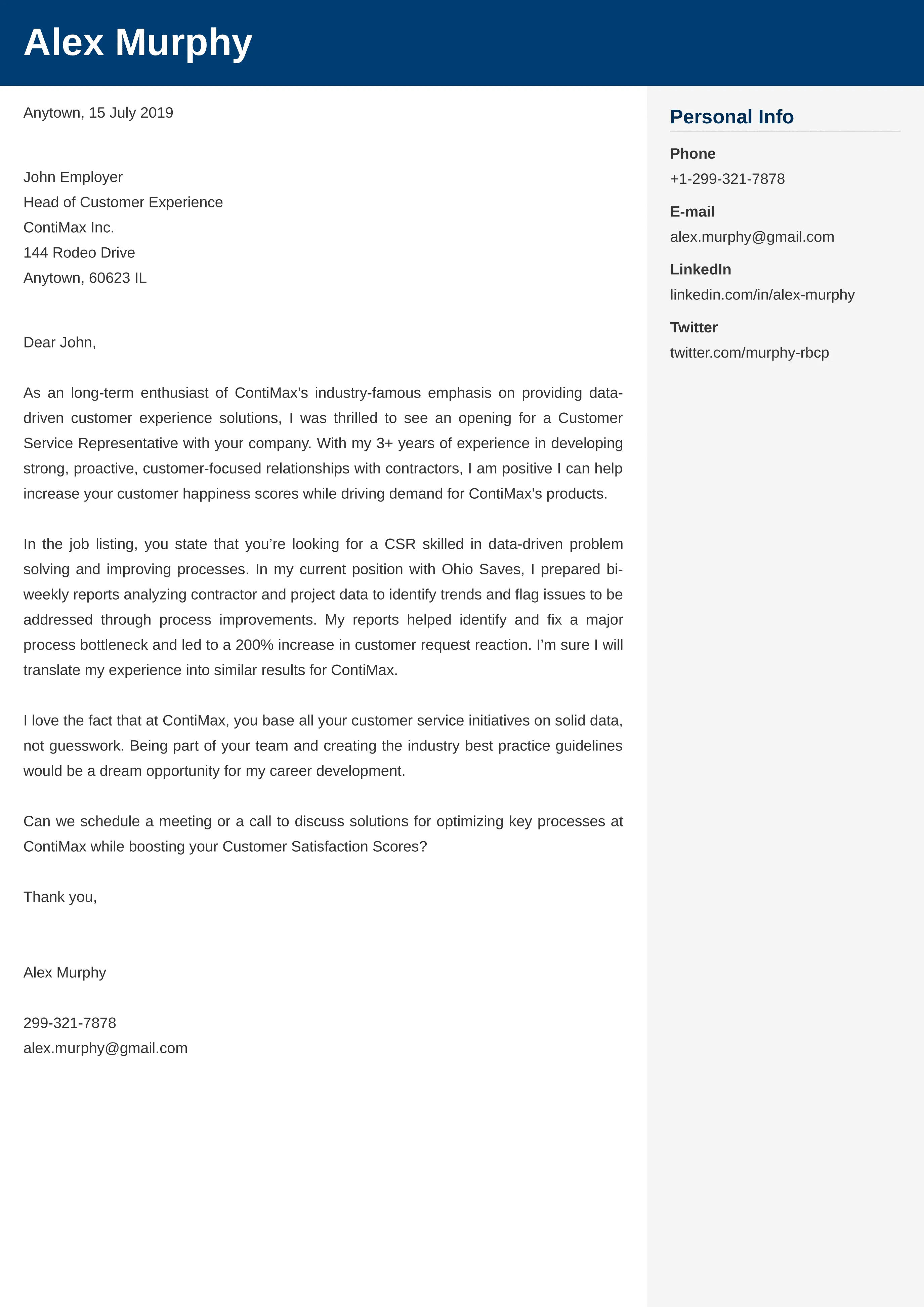
Before submitting your cover letter, carefully proofread it for any grammatical errors, spelling mistakes, or typos. Errors can create a negative impression and undermine your credibility. Use a spell checker and grammar checker, but also read the letter aloud to catch any mistakes. Ensure your formatting is consistent and professional. Use a clear, readable font and standard margins. Keep the letter concise, avoiding long paragraphs or dense blocks of text. Break up your content with bullets and white space to make it easier for the hiring manager to read. A polished and well-formatted cover letter shows attention to detail and demonstrates professionalism.
Formatting your cover letter
The formatting of your customer service cover letter can significantly impact its readability and professionalism. Choose a clean, easy-to-read font such as Times New Roman, Arial, or Calibri, with a font size between 10 and 12 points. Use standard one-inch margins on all sides. Left-align your text and single-space the body of the letter, but double-space between paragraphs. Include clear headings and subheadings to organize the information, and use bullet points or numbered lists to highlight key skills and achievements. Ensure the formatting is consistent throughout the letter. A well-formatted cover letter is easy to read and enhances your overall presentation, making a positive impression on the hiring manager. It is essential to present your information in a way that is clear, organized, and visually appealing.
Common Mistakes to Avoid
Avoid common mistakes that can detract from your cover letter’s effectiveness. Don’t use generic, impersonal language that could apply to any job. Steer clear of typos, grammatical errors, and spelling mistakes. Don’t simply restate your resume; provide additional information and context that supports your qualifications. Avoid including irrelevant information or exaggerating your skills and experience. Do not write a cover letter that is too long; aim for a single page unless explicitly requested otherwise. Ignoring the job description and writing a generic letter shows a lack of attention to detail and a lack of genuine interest in the role. Taking care to avoid these pitfalls will greatly increase your chances of success.
Tailoring Your Cover Letter to the Job Description
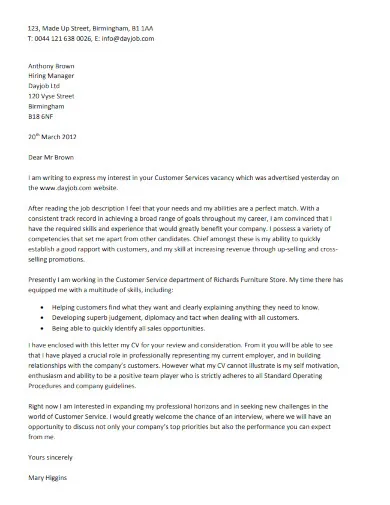
The most successful cover letters are tailored to the specific job description and the requirements of the role. Carefully review the job posting and identify the key skills, qualifications, and experiences the employer is seeking. Customize your cover letter to address these specific requirements. Use the same keywords and phrases from the job description, and highlight how your skills and experience align with their needs. Include specific examples that demonstrate your ability to meet their expectations. Tailoring your cover letter will show the hiring manager that you understand the role and are a strong fit for the company. By addressing the employer’s needs and requirements directly, you increase the relevance of your application and make a stronger impression.
